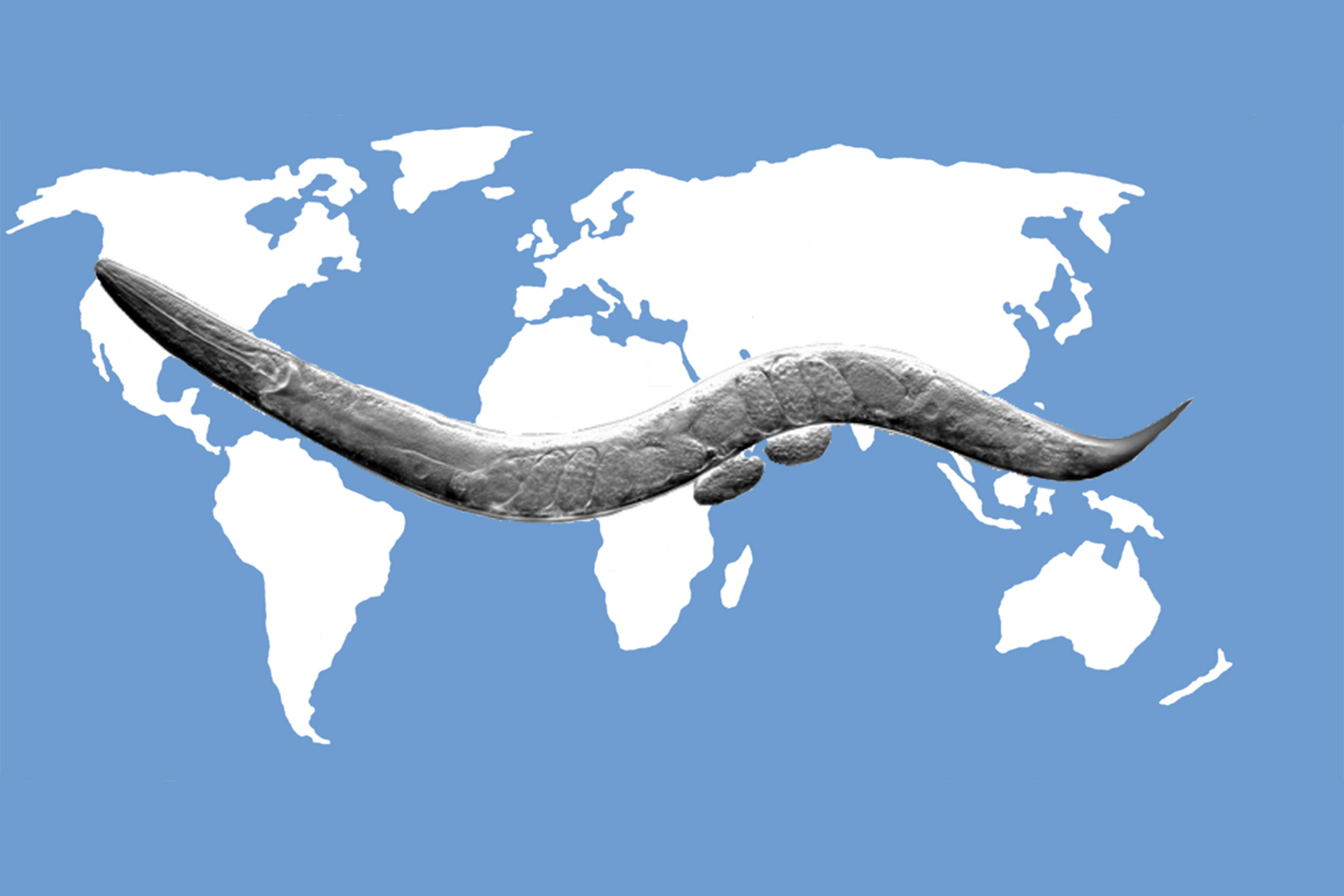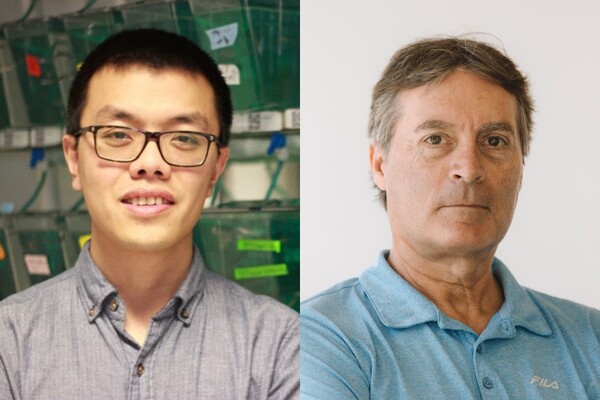Main Second Level Navigation
Road Less Traveled - Donnelly Labs Tackle Neglected Parasitic Diseases

Researchers partner with pharmaceutical industry to meet a global health challeng
Parasites nearly killed her grandmother, and now Samantha Del Borrello is striking back.
Del Borrello is a graduate student investigating new ways of attacking parasites. She says her “nonna’s” childhood in 1940s rural Italy was plagued by intestinal worms that ravaged her health to the point doctors thought she would die.
“It is crazy to think that I may not be here because of a parasite, and now I am working on preventing the parasites from hurting people. It’s kind of cool,” says Del Borrello, a PhD candidate in the University of Toronto’s Donnelly Centre and the Department of Molecular Genetics.
Internal parasites, which infect the gut, lungs and liver, may not be a major health concern in the developed world, but globally they affect two billion people.
Gut worms infect 880 million children, according to the World Health Organization. Parasitic infections are rampant in the poorest areas, caused by nematode worms like roundworms, whipworms and hookworms. Untreated, these infections typically cause anemia and lethargy, or even death. Children are most vulnerable.
“Drugs already exist for some parasite infections but resistance is always evolving — we need new ways to attack these complex creatures,” says Andrew Fraser, a professor in the Donnelly Centre, and Del Borrello’s PhD supervisor.
Growing drug resistance comes at a time when the pharmaceutical industry has little incentive to invest in solving health problems that affect poor people who cannot afford treatment.
One way forward is for academic labs to work with pharmaceutical companies to identify promising drugs. Fraser’s work with Janssen, a branch of the pharmaceutical giant Johnson & Johnson, is one example of this kind of collaboration.
Peter Roy, who is also a professor in the Donnelly Centre, says there is also potential for the agriculture industry to play a role in developing new treatments.
“Most of the meat we eat has been treated with anthelmintics, drugs that kill parasitic worms,” says Roy. “If novel anthelmintics are shown to be useful for cows and sheep, then they might become therapies for humans.”
Fraser and Roy, who are also both appointed to the Department of Molecular Genetics, lead research into identifying new anti-parasitic drugs. As their main tool, the researchers are relying on a harmless type of worm called C. elegans, which is also widely used in labs. Unlike parasites, which live inside a body, lab worms grow on a dish and are easy to work with.
Many parasites make their way to places in the body where there is little oxygen to breathe. In order to survive, they switch to a type of metabolism that’s not fueled by oxygen.
Normally, lab worms need oxygen to live. But Del Borrello and PhD candidate Margot Lautens found a way to trick the lab worm into behaving like a parasite, deep inside the gut. Using drugs, they turned off the worm’s ability to use oxygen, forcing the worm to use parasite-like metabolism. This allowed researchers to study quirky parasite biology in an animal right in front of them.
"It is crazy to think that I may not be here because of a parasite, and now I am working on preventing the parasites from hurting people" - Samantha Del Borrello, PhD candidate
“The way worms survive in low oxygen is extremely unusual, humans don’t use this process at all. That’s the key. It means that if we can target this unusual metabolic pathway, we should be able to kill the worms without having any impact on the human host,” says Fraser.
Using a different strategy, Roy’s team has already uncovered a treasure trove of potential anti-parasitic compounds. Two years ago, postdoctoral fellow Andrew Burns was part of a team that uncovered 275 chemical compounds that killed C. elegans. These worm active compounds, dubbed wactives, were then tested on fish and human cells to identify which ones could potentially harm the host.
That team is now teasing apart how wactives work. A new study in PLOS Neglected Tropical Diseases describes how a compound called wact-86 works by blocking an important enzyme in the worm. The next step is to explore whether wactives can clear parasitic infections in larger animals.
Another potential avenue is to work with a pharmaceutical company from the start. To do this, Fraser is working with BIO Ventures for Global Health (BVGH), a Seattle-based non-profit that boosts research in neglected tropical diseases through partnerships between academic labs and the pharmaceutical industry. The organization, among other roles, helps academia and industry share reagents, says Ujwal Sheth, Associate Director at BVGH.
Last month, Fraser signed a deal with Janssen, granting his team rights to the company’s drug collection—a potential chemical gold mine with 80,000 diverse compounds. If they find a medicinally promising compound, Janssen could decide take it on, said Sheth. Or, the BVGH could help connect Fraser with other partners with capacity to develop new medicines, she added.
“The best anthelminthic drug today, ivermectin, was developed in the 1970s as a partnership between an academic lab and a major pharmaceutical company. It’s a great cooperative model to help solve these huge global health problems,” said Fraser.
News



